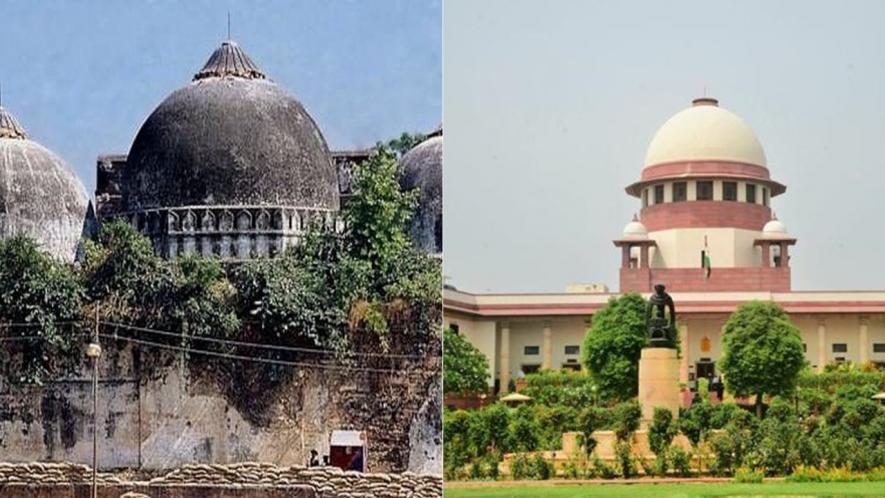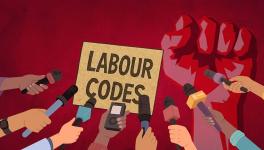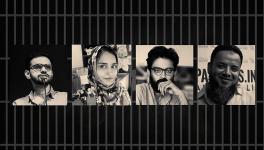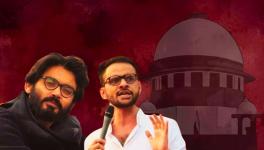Ayodhya Verdict: Majoritarian Faith Prevailed, Say Some Experts

Faith prevailed upon title in the Supreme Court’s 1,045-page judgment on the decades-long Babri Masjid-Ramjanmabhoomi land dispute, allege legal luminaries. They added that the apex court exercised its special power enshrined under Article 142 of the Constitution to oust Muslim parties and hand over the contentious 2.77 acres of land—where the 16th century mosque once stood—to Hindus for construction of a Ram temple.
They said the court’s duty in this case was to ensure that the wrong caused to the mosque was punished and ensure the rule of law; not to be benevolent by giving the land which Muslims had not demanded.
“The court”—said Faizan Mustafa, vice chancellor, National Academy of Legal Studies and Research (NALSAR) University of Law, Hyderabad—“categorically said it won’t go into anyone’s personal belief. It is a landmark judgment on Article 25 (freedom of religion), but its not fair to decide a property dispute on the basis of faith. First, the court said it would not decide the matter on the basis of faith, which is a correct statement of law, but it eventually did the same.”
For example, he said, the court had said that the decision would be on the basis of title, not faith, but eventually, the court relied on 19th century travelogues—which has been questioned by historians—and concluded that it is people’s faith that Ram was born under the central dome. Thus, the Hindu parties were given the land.
Also watch: How Do Litigants Perceive Ayodhya Verdict?
Talking about the principle of “justice, equity and good conscience”, which was mentioned by the court in the judgment, Mustafa said it was introduced in Indian courts by the colonisers, which damaged Hindu and Muslim laws in India beyond repair. “The question in this case was related to a title on which our civil procedure code is very clear. In this case, the principle of equity and good conscience does not apply. The court has basically tried to give out a message that the principle of “justice, equity and conscience” has come to it through Article 142 of the Constitution, which empowers judges to exercise their special power and make decisions or pass a decree,” he said.
“There is one more principle of equity, justice and good conscience that was ignored in this judgment that ‘one who demands equity must do equity’. It means, one who seeks equity must come with clean hands. Several members of the Ramjanmabhoomi Nyas (a plaintiff in the case) were involved in illegal acts of desecrating the mosque by illegally placing idols in 1949 and razing the mosque to the ground in1992. So, the party (the Nyas) which has been given the land doesn’t have clean hands. If the principle is applied, the decision to give out the land to Hindus is not fair,” he said.
The court said in the judgment, “Consistent with the principles of justice, equity and good conscience, both Suits 4 and 5 will have to be decreed and the relief moulded in a manner which preserves the constitutional values of justice, fraternity, human dignity and the equality of religious belief.”
At the same time, Mustafa also appreciated that the judgment was nuanced in certain aspects. “There is an important point in the end of the judgment, which our liberals and secularists are not appreciating as much as it deserves. Overturning the Allahabad High Court judgment of 2010 where the HC had divided the land into three parts, the judges said there won’t be lasting peace with the HC verdict. The court said if there will be division of the 1,500 square yard of the disputed land, there won’t be peaceful enjoyment and the dispute will go on,” he pointed out.
By giving five acres of an alternate piece of land to Muslim parties, the court—he said—has accepted that the Muslim parties have suffered injuries and their rights have been violated. “Since the court was doing a practical solution to decades-long dispute, it decided that one party should be given the disputed land and the other the alternate site,” he explained.
Invoking inherent power under Article 142 of the Constitution, the apex court provided alternative land for the construction of mosque. “This Court in the exercise of its powers under Article 142 of the Constitution must ensure that a wrong committed must be remedied. Justice would not prevail if the Court were to overlook the entitlement of the Muslims who have been deprived of the structure of the mosque through means which should not have been employed in a secular nation committed to the rule of law. The Constitution postulates the equality of all faiths. Tolerance and mutual co-existence nourish the secular commitment of our nation and its people,” the court said.
Regarding the court’s observation that the Uttar Pradesh Central Sunni Waqf Board failed to prove its possession before 1857; whereas, the Hindu parties continued its worship in the outer courtyard, he said, “Though the verdict has many good observations, I am disappointed with a couple of points made by judges in their ruling. First, seeking proof of namaz (worship) in the mosque from 1528 AD (when the mosque was built) till 1857 appears to be laughable for me because this was the era of Mughal empire and Awadh had very powerful Muslim rulers at that time. When Muslim rulers were at their peak, it is absurd to conclude there was no prayer in the mosque. If there is a mosque, there was a direct presumption that namaz used to be offered and the land belonged to waqf. Second, the Mughal empire collapsed in 1857 and the Britishers took over,” he said, adding that it is only later that Hindus started offering worship in the outer courtyard. But using this against the Muslims is in violation of the principle of equity and justice.
Paragraphs 786, 797 and 798 are very important in the entire judgment. It shows only Muslim parties were expected to show their exclusive possession on the land.
Para 786 states, “Though, the case of the [Muslim] plaintiffs … is that the mosque was constructed in 1528 by or at the behest of Babur, there is no account by them of possession, use or offer of namaz in the mosque between the date of construction and 1856-7. For a period of over 325 years which elapsed since the date of the construction of the mosque until the setting up of a grill-brick wall by the British, the Muslims have not adduced evidence to establish the exercise of possessory control over the disputed site. Nor is there any account in the evidence of the offering of namaz in the mosque, over this period…
797. On the balance of probabilities, there is clear evidence to indicate that the worship by the Hindus in the outer courtyard continued unimpeded in spite of the setting up of a grill-brick wall in 1857. Their possession of the outer courtyard stands established together with the incidents attaching to their control over it.
798. As regards the inner courtyard, there is evidence on a preponderance of probabilities to establish worship by the Hindus prior to the annexation of Oudh by the British in 1857. The Muslims have offered no evidence to indicate that they were in exclusive possession of the inner structure prior to 1857 since the date of the construction in the sixteenth century. After the setting up of the grill-brick wall, the structure of the mosque continued to exist and there is evidence to indicate that namaz was offered within its precincts.” (emphasis added)
Faizan Mustafa went on to explain that with an aim to avoid any conflict, a chabutra (a terrace popularly called Ram Chabutra) was constructed for worship. The point to be noted here—he said—is that following the first litigation, the 19th century court did not allow Hindu parties to construct a temple there. “Instead of referring to the tolerance and accommodation of the Muslim parties, the court used the goodwill gesture to rule against them. This is unfortunate,” he said.
Also watch: Ayodhya Verdict: Babri Masjid-Ramjanmabhumi Dispute Explained
He said not even a month had passed since the adoption of the Constitution (November 26, 1949) and one more month was left for its enforcement (January 26, 1950), when idols were placed and the mosque was locked after turning it into a temple, but Muslims did not approach to court till 1961.
But the verdict, said Mustafa, has demolished several rumours. He said, “Muslims in India were always taunted as ‘Babur ki Aulad’ (Babur’s sons) who built a mosque demolishing a temple. The community should celebrate this occasion as the baseless and absurd allegation against them has been removed by the apex court. It wasn’t proved that Babur demolished any temple for constructing the Babri Masjid. There is no evidence in the ASI report which shows that there was a temple. I think the Supreme Court has done a great favour to ensure a harmonious relation between Hindus and Muslims. The narrative created by extreme right has been demolished by the top court,” he said.
The court in the judgment clearly stated that Babri Masjid was not built on an abandoned land. The ASI found some structure under it which was not an Islamic structure. But it could also not be established that it was a temple. The Supreme Court also said that “the destruction of the mosque took place in breach of the order of status quo and an assurance given to this Court. The destruction of the mosque and the obliteration of the Islamic structure was an egregious violation of the rule of law”.
Asked about the arguments of maintaining rule of law, he said it’s unfair to talk about the rule of law ignoring ground realities. The Muslim parties must not go for review. “Since the judges wanted to give the entire plote to Ram Lalla, therefore, they even ousted the Nirmohi Akhada going in technicalities. The court stated the law in such away that ‘shebait’ (person who is appointed by temple authorities to serve the deity, maintain the property and manage it) is ousted to hand over the land to deity (Ram Lalla Virajman) — which entered as a litigant in 1989.
Asked about the secrecy of the author of the judgment, he said he has so far gone through thousands of judgments delivered by courts in India and abroad but did not find a single judgment where the judges had to conceal their names. “The judges take oath that they deliver verdict without any fear and favour, but what happened here is that they chose remain anonymous. Ideally, the author of the judgment should have identified himself and others should have come on record that they are endorsing it,” he concluded.
MR Shamshad, advocate-on-record in the SC and who represented one of the Muslim parties, said the gesture of the top court to balance equities by giving five acres of land to Muslims is completely “misplaced” and reflects how an “unjust” resolution can be imposed on a community, which had earlier rejected much better options and it did so because it was not a matter of making a grand mosque, but a matter of a legal right on that place.
“All the serious issues raised by the Muslims to establish that this was a mosque has been accepted by the court. In the final conclusion, the court gave the entire land to Hindus. In essence, this final conclusion is not just, and is not in consonance with the settled laws of title dispute. It will certainly embolden the unprincipled political class to attack the Muslim community and their other religious structures, which they have spoken in public at large,” he said.
“This was tested up until the highest court and, in that test, the rule of law has failed and majoritarian view has prevailed. I feel while respecting the finality on this issue, the Muslims should reject the offer of five acres of land and that land too can be enjoyed by Hindu brothers for the extension of their temple,” he added.
The Hindu side had offered 10 acres of land and Rs 5 crore in exchange for the mosque in 1986. The offer stood till recently. One of the offers from the mediators to the dispute was five acres of land elsewhere, which was rejected by Muslim parties.
Also read: Babri Masjid: History of the Legal Dispute
“The final stamp of the judiciary has recognised a certain faith and belief, and in doing so, has permitted Lord Ram to be historicised. A simple legal issue pending in court came to be reignited through vested political interests by filing a fresh case in 1989. The entire case was thereafter became political at the behest of the Vishwa Hindu Parishad and its ilk. Finally, the politics of the country prevailed in the shape of titled judicial verdicts, firstly by the High Court and finally by the Supreme Court. So, I am of the view that rule of law has been defeated, majoritarianism and faith of one religion has prevailed,” he concluded.
Get the latest reports & analysis with people's perspective on Protests, movements & deep analytical videos, discussions of the current affairs in your Telegram app. Subscribe to NewsClick's Telegram channel & get Real-Time updates on stories, as they get published on our website.
























